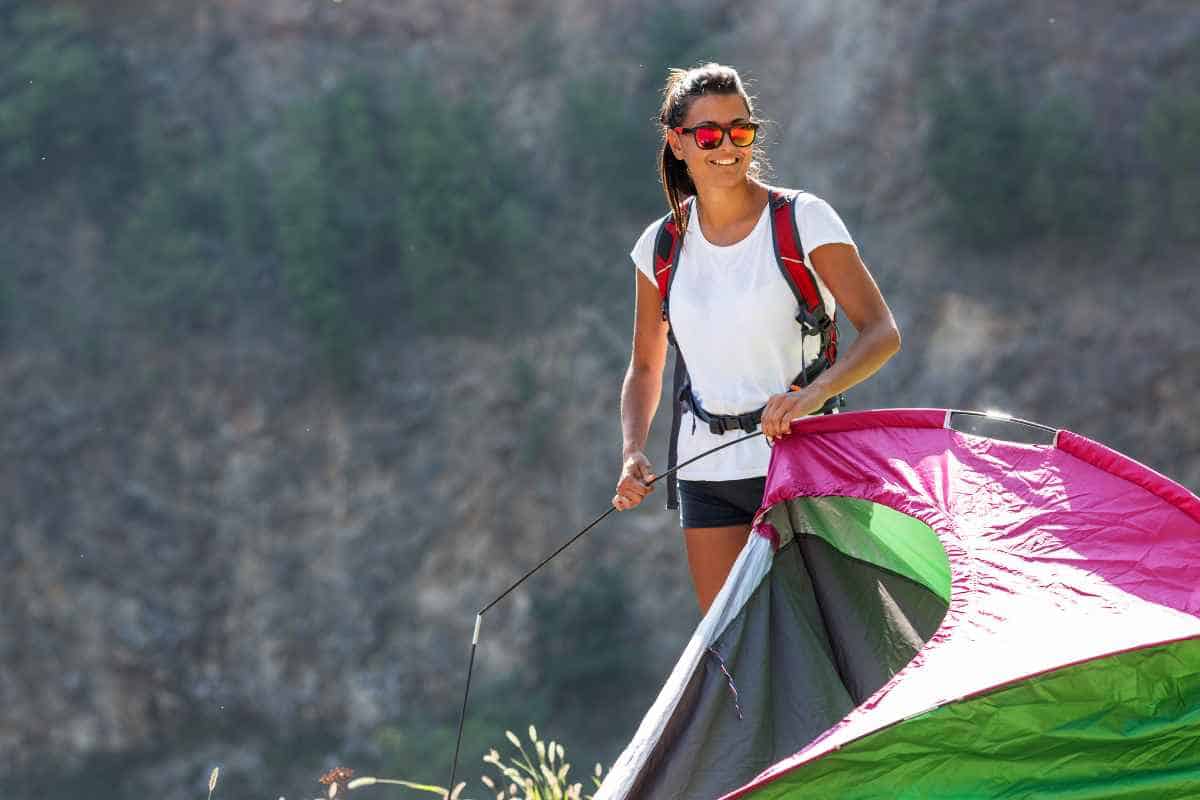Setting up a tent is one of the most important tasks when camping. However, the time it takes to set up a tent can vary depending on various factors.
The size and complexity of the tent, the experience level of the camper, and the weather conditions can all impact the time it takes to set up a tent.
For experienced campers, setting up a tent can take as little as a few minutes, especially if they have a pop-up tent. On the other hand, beginners may take longer to set up their tent, especially if they have a larger or more complex tent.
Additionally, weather conditions can also impact the time it takes to set up a tent.
Windy conditions, for example, can make it more difficult to set up a tent and may require additional time and effort.
Types of Tents
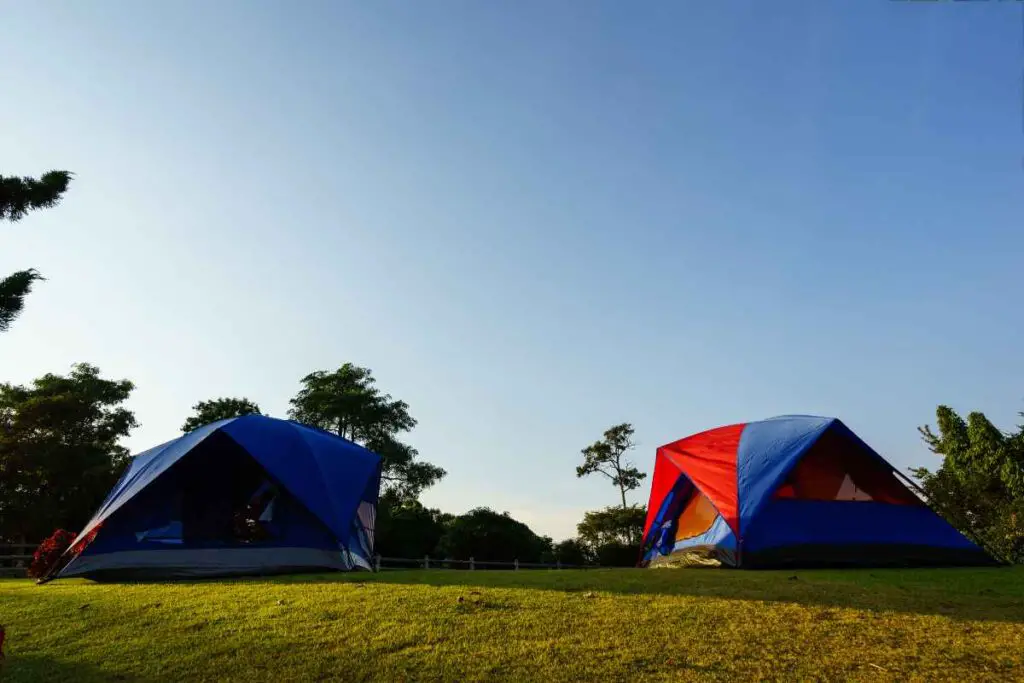
When it comes to camping, choosing the right tent is essential.
There are several types of tents available, each with its own unique features and benefits.
In this section, we will explore the most common types of tents and their characteristics.
Dome Tents
Dome tents are one of the most popular types of tents. They are easy to set up and offer a good amount of headroom.
Dome tents are designed with two or more poles that cross in the center, creating a dome-like shape. They are ideal for camping in mild to moderate weather conditions.
Read Next – What Is a 3 Seasons Tent?
A-Frame Tents
A-frame tents are another popular type of tent. They are designed with a triangular shape and are supported by two poles at each end.
A-frame tents are easy to set up and offer good ventilation. They are ideal for camping in warm weather conditions.
Tunnel Tents
Tunnel tents are designed with a long, tunnel-like shape. They are supported by a series of poles that run parallel to each other. Tunnel tents offer a good amount of headroom and are ideal for camping in windy conditions.
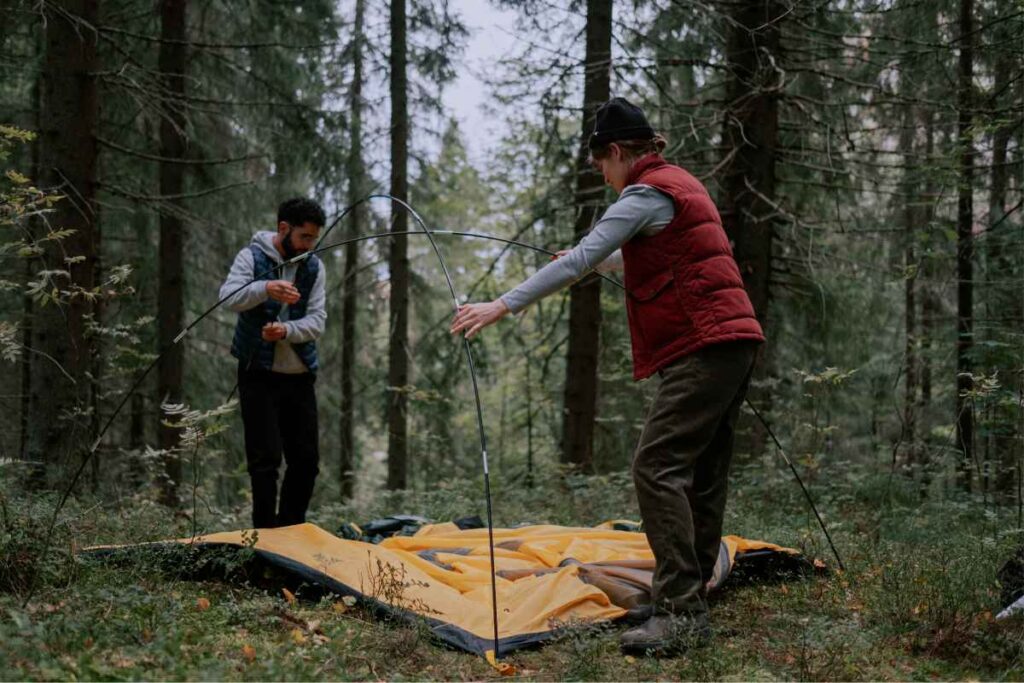
Frame Tents
Frame tents are designed with a rigid frame that supports the tent. They are easy to set up and offer a good amount of headroom. Frame tents are ideal for camping in harsh weather conditions.
Pop-Up Tents
Pop-up tents, also known as instant tents, are designed to be set up quickly and easily.
They are ideal for camping in fair weather conditions and are perfect for those who want to spend less time setting up their tent and more time enjoying the great outdoors.
Instant Tents
Instant tents are similar to pop-up tents but are designed with a more traditional tent shape.
They are easy to set up and offer a good amount of headroom. Instant tents are ideal for camping in fair weather conditions and are perfect for those who want a quick and easy setup.
Choosing the right tent type depends on the camping conditions and personal preferences. Whether you prefer a quick and easy setup or a more traditional tent shape, there is a tent type that will suit your needs.
Tent Setup Time
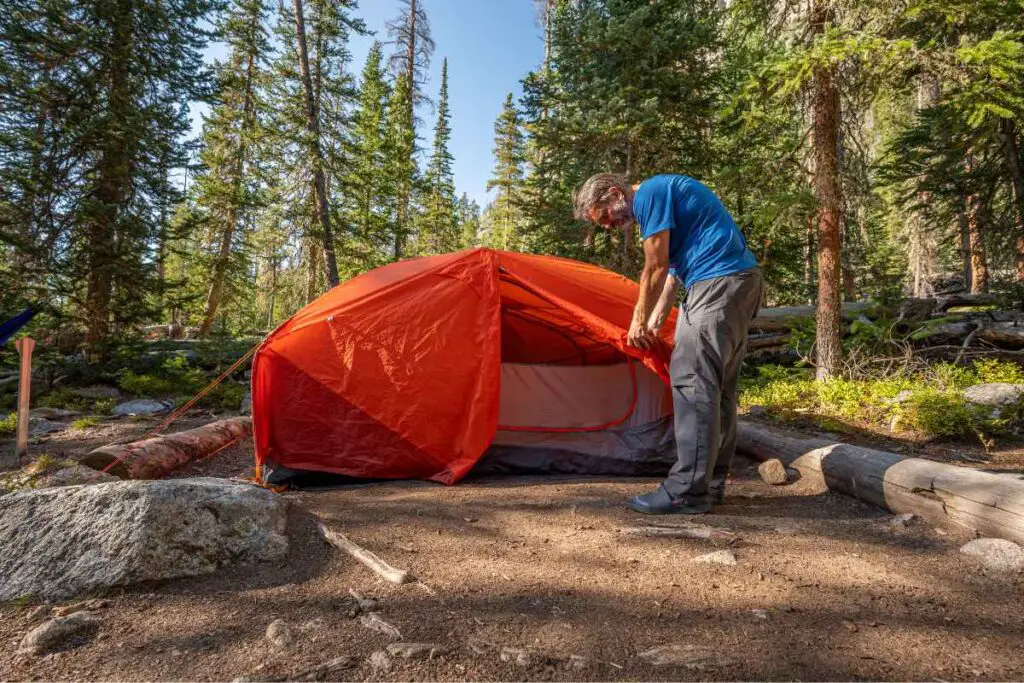
Setting up a tent is one of the most important tasks when camping, and it can be a daunting task for many people.
The time it takes to set up a tent can vary depending on several factors. In this section, we’ll discuss some of the factors that affect tent setup time and the average time it takes to set up a tent.
Factors Affecting Tent Setup Time
Several factors can affect the time it takes to set up a tent.
Here are some of the most important factors:
- Familiarity with the tent: If you’re setting up a tent for the first time, it may take longer than if you’re familiar with the tent’s design and assembly process.
- Size of the tent: The larger the tent, the more time it will take to set up.
- Weather conditions: If it’s raining or windy, it may take longer to set up a tent.
- Complexity of the tent: Some tents are more complex than others and may require more time to assemble.
- Number of people: The more people you have, the faster you can set up a tent.
Average Tent Setup Time
The average tent setup time can vary widely depending on the factors mentioned above.
Here are some estimates for the time it takes to set up different types of tents:
| Type of Tent | Average Setup Time |
|---|---|
| Pop-Up Tent | 1-2 minutes |
| Backpacking Tent | 5-10 minutes |
| Family Tent | 15-30 minutes |
It’s important to note that these times are just estimates and can vary widely depending on the factors mentioned above.
To reduce the time it takes to set up a tent, it’s a good idea to practice beforehand.
Familiarize yourself with the tent’s design and assembly process, and make sure you have all the necessary parts and instructions. It’s also a good idea to choose a flat and clear campsite and remove any debris or obstacles that could get in the way of setting up the tent.
In addition, it’s important to make sure that the tent is waterproof and that all the parts are assembled correctly. This will help protect you and your gear from harsh weather conditions.
Overall, the time it takes to set up a tent can vary widely depending on several factors. By being prepared and familiar with the tent’s design and assembly process, you can reduce the time it takes to set up your tent and enjoy your camping trip.
Setting Up Alone vs. With Others
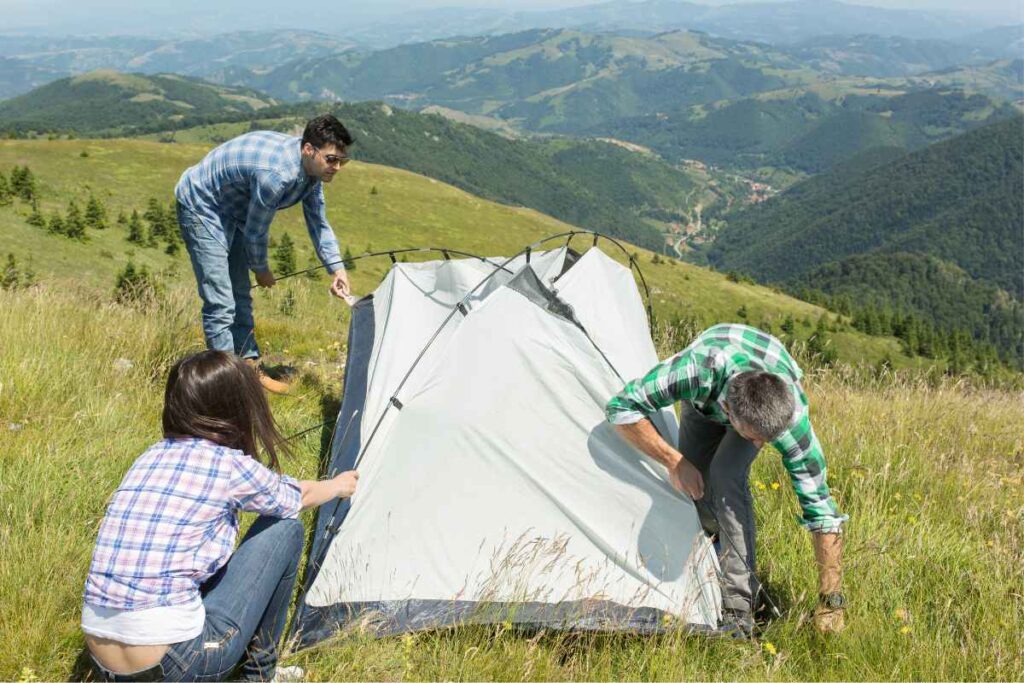
When it comes to setting up a tent, one of the biggest considerations is whether to do it alone or with others.
Both approaches have their advantages and disadvantages, and the choice ultimately depends on the individual’s preferences and circumstances.
Setting Up Alone
Setting up a tent alone can be a challenging task, especially for those who are new to camping.
However, it can also be a rewarding experience, as it allows the individual to work at their own pace and take pride in their accomplishment.
One of the main advantages of setting up alone is that it requires less coordination and communication than setting up with others. This can be particularly useful for introverted or independent individuals who prefer to work alone.
However, setting up alone also has its drawbacks. For one, it can be more time-consuming, as there is only one person to do all the work. Additionally, it can be physically demanding, especially for larger tents that require a lot of manpower to set up.
Also Helpful – How to Repair Tent Mesh?
Setting Up With Others
Setting up a tent with others can be a fun and social experience, as it allows individuals to work together towards a common goal.
This approach can be particularly useful for families or groups of friends who want to bond over a shared activity.
One of the main advantages of setting up with others is that it can be faster and more efficient than setting up alone. With multiple people working together, tasks can be divided and completed more quickly.
However, setting up with others also has its drawbacks. For one, it requires coordination and communication, which can be challenging if individuals have different ideas about how to set up the tent. Additionally, it can be less rewarding, as individuals may not feel as much ownership over the final product.
Overall, the choice between setting up alone or with others depends on the individual’s preferences and circumstances. While setting up alone can be more challenging, it can also be more rewarding. On the other hand, setting up with others can be more efficient, but also requires more coordination and communication.
Tips for Setting Up Your Tent

Choosing the Right Campsite
Before setting up your tent, it’s important to choose the right campsite. Look for a flat area that is free of rocks, sticks, and other debris that could damage your tent.
Consider the weather conditions and choose a sheltered spot if possible. If you’re camping in a park, make sure to follow the rules and regulations regarding campsite selection.
Cleaning the Tent Area
Once you’ve chosen your campsite, it’s time to clean the area where you’ll be setting up your tent. Remove any rocks, sticks, or other debris that could damage your tent.
If the ground is damp, use a tarp or groundsheet to protect the bottom of your tent from moisture. Make sure to clean the area thoroughly to keep your tent clean and comfortable.
Assembling the Tent
There are two types of tents: freestanding and non-freestanding. Freestanding tents are easier to set up and can be moved once assembled.
Non-freestanding tents require stakes or guy lines to hold them in place. To assemble your tent, lay out the tent body and attach the poles. If your tent has aluminum poles, make sure the latches are securely fastened.
Raising the Tent
Once you’ve assembled your tent, it’s time to raise it. If your tent has a pre-set frame, help the tent up by lifting parts of it.
The poles should hold the frame in place. If your tent requires stakes or guy lines, make sure they are securely fastened to keep the tent stable.
Securing the Tent
To keep your tent secure, make sure all stakes and guy lines are tight.
If the weather is windy, consider using additional stakes or guy lines to keep your tent stable. Make sure the rainfly is securely fastened to keep the interior of your tent dry.
Interior Setup
Once your tent is set up and secure, it’s time to set up the interior. Lay out your sleeping bags, pads, and other gear.
Consider using a tent organizer to keep your gear organized and off the floor. If you’re camping with a family, consider using a family tent with multiple rooms for added comfort.
Storage
When it’s time to pack up your tent, make sure it’s clean and dry. Remove any debris from the tent area and pack your tent away in a dry, secure location. Consider using a storage bag or container to keep your tent safe and protected until your next camping trip.
